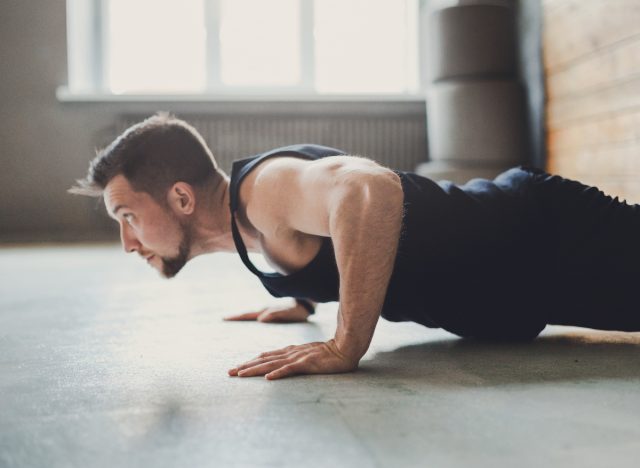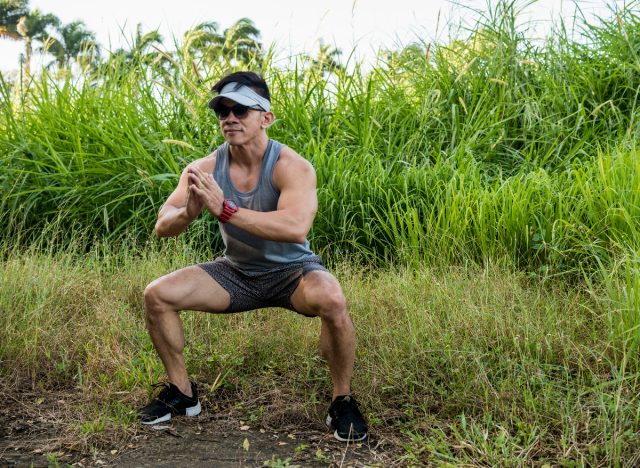3 Bodyweight Tests That Reveal Your True Fitness Age After 40

Age doesn’t have to dictate how strong, mobile, or capable you feel. In many ways, your “fitness age” tells a more honest story than the number on your driver’s license. And the best way to find out where you stand? Put yourself to the test.
Bodyweight tests cut through the guesswork. They don’t require fancy gym equipment or complicated setups. Instead, they show you exactly how your body performs using only your weight. For men over 40, this is crucial. These tests reveal how well you move, where you’re still performing at a high level, and where time may have started to chip away at your strength and endurance.
The good news? You don’t need an all-day workout or an elite-level training plan to do them. These are quick, honest assessments that challenge your body and deliver a clear picture of what’s working—and what needs attention.
Here are three bodyweight tests that can help you discover your actual fitness age and build a plan to keep it moving in the right direction.
Test #1: Max Push-Ups

The push-up is a complete measure of upper-body strength and endurance. It challenges your chest, shoulders, triceps, and core while forcing you to maintain full-body stability. For men over 40, a strong push-up score means your upper body is resilient and capable of handling life’s physical demands.
How to Do It:
- Start in a high plank with your hands under your shoulders.
- Engage your core and glutes to keep your body in a straight line.
- Lower your chest until it nearly touches the floor.
- Press back to the starting position without letting your hips sag.
- Perform as many reps as possible without breaking form.
Form Tip: Keep your elbows at about a 45-degree angle and maintain a neutral head position.
Where Your Score Ranks:
- Excellent: 40+
- Good: 25–39
- Needs Work: Under 25
Test #2: Max Plank Hold

The plank is one of the best ways to measure true core strength. It goes beyond your abs. It challenges your shoulders, glutes, and deep stabilizing muscles. For men over 40, holding a plank for an extended time indicates that your body can resist fatigue and protect your spine under stress.
How to Do It:
- Start on your forearms with elbows under your shoulders.
- Extend your legs behind you and squeeze your glutes.
- Keep your body in a straight line from head to heels.
- Hold this position as long as possible without letting your hips drop or rise.
Form Tip: Pull your belly button toward your spine and breathe steadily.
Where Your Score Ranks:
- Excellent: 3+ minutes
- Good: 2–3 minutes
- Needs Work: Under 2 minutes
Test #3: Max Bodyweight Squats in 60 Seconds

The squat tests lower-body strength, power, and endurance while demanding good mobility in your hips, knees, and ankles. For men over 40, it reveals how well your body can move through a full range of motion under control, and for speed.
How to Do It:
- Stand with your feet shoulder-width apart.
- Push your hips back and bend your knees to lower into a squat.
- Drop until your thighs are at least parallel to the ground.
- Drive through your heels to stand tall.
- Perform as many clean reps as possible in 60 seconds.
Form Tip: Keep your chest tall and avoid letting your knees cave inward.
Where Your Score Ranks:
- Excellent: 45+
- Good: 30–44
- Needs Work: Under 30
The Best Methods for Improving Your Bodyweight Strength
Improving your bodyweight strength after 40 comes down to innovative, consistent training. You need exercises that challenge your muscles without overloading your joints. The goal is to build strength you can use in real life while keeping your training sustainable. These methods work whether you are just getting started or fine-tuning an existing program.
- Prioritize Full-Range Movements: Use exercises that take your muscles through their entire range, like deep push-ups, controlled squats, and slow, extended planks.
- Add Progressions Over Time: Make exercises harder by adding pauses, slowing down the lowering phase, or using single-arm and single-leg variations.
- Train with Higher Frequency: Shorter, more frequent sessions (3–5 days per week) help you improve faster than doing one long workout per week.
- Pair Strength with Mobility: Incorporate stretches and mobility drills before and after training to keep joints healthy and improve movement quality.
- Use Time-Based Challenges: Instead of counting only reps, work within time frames (like max squats in 60 seconds) to push your endurance and power.
- Recover Intentionally: Schedule rest days, get enough sleep, and use active recovery methods like walking or light stretching to help your body adapt.